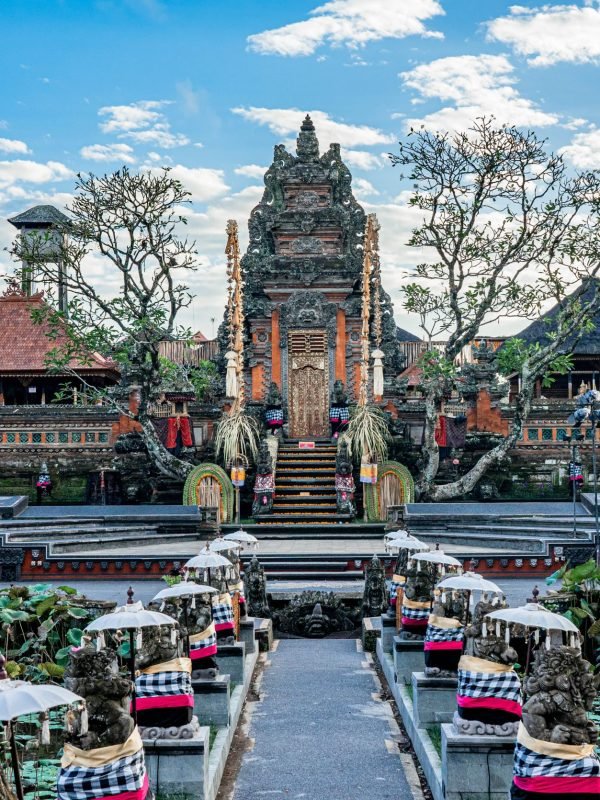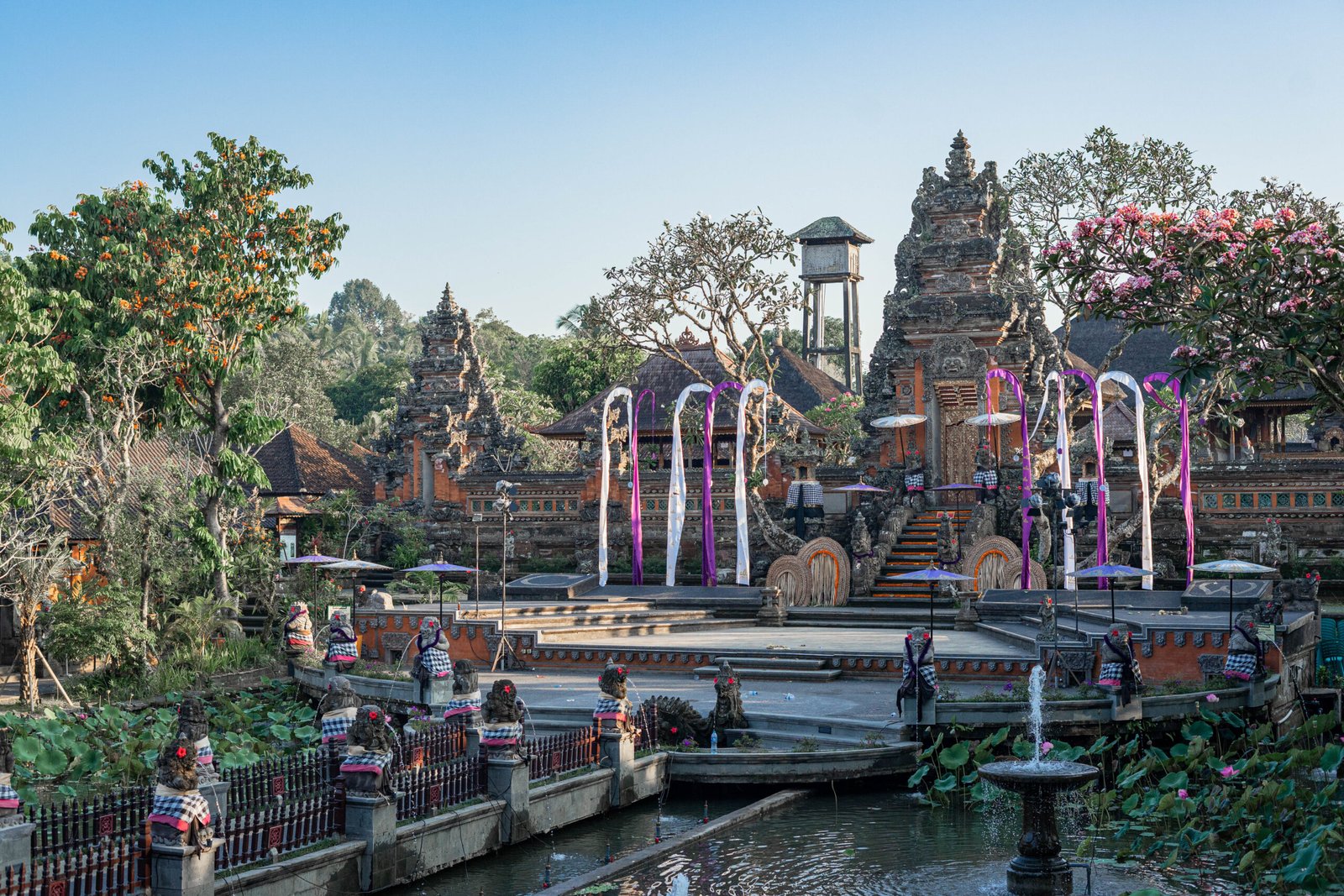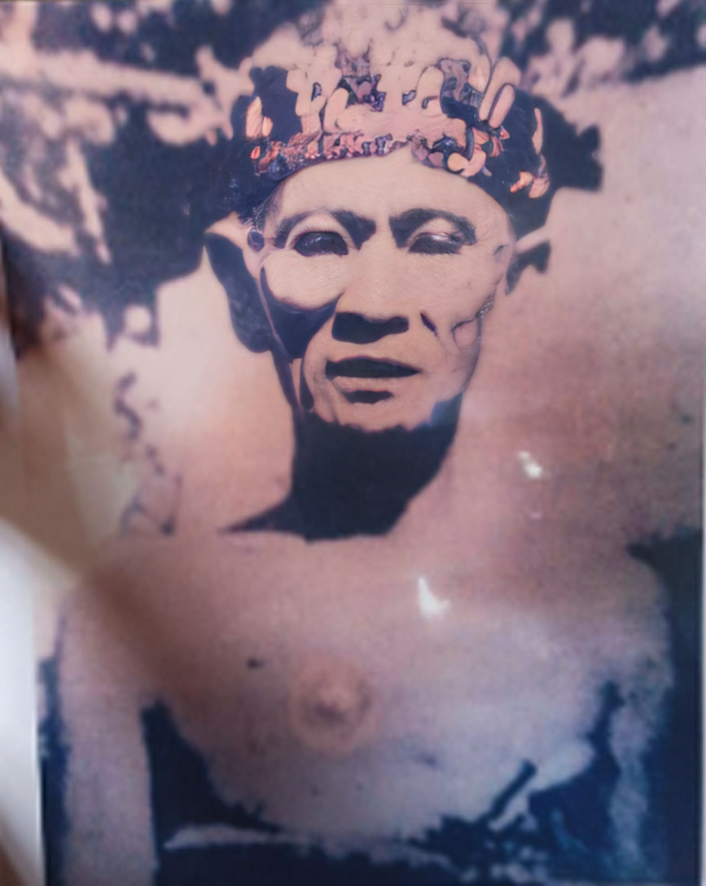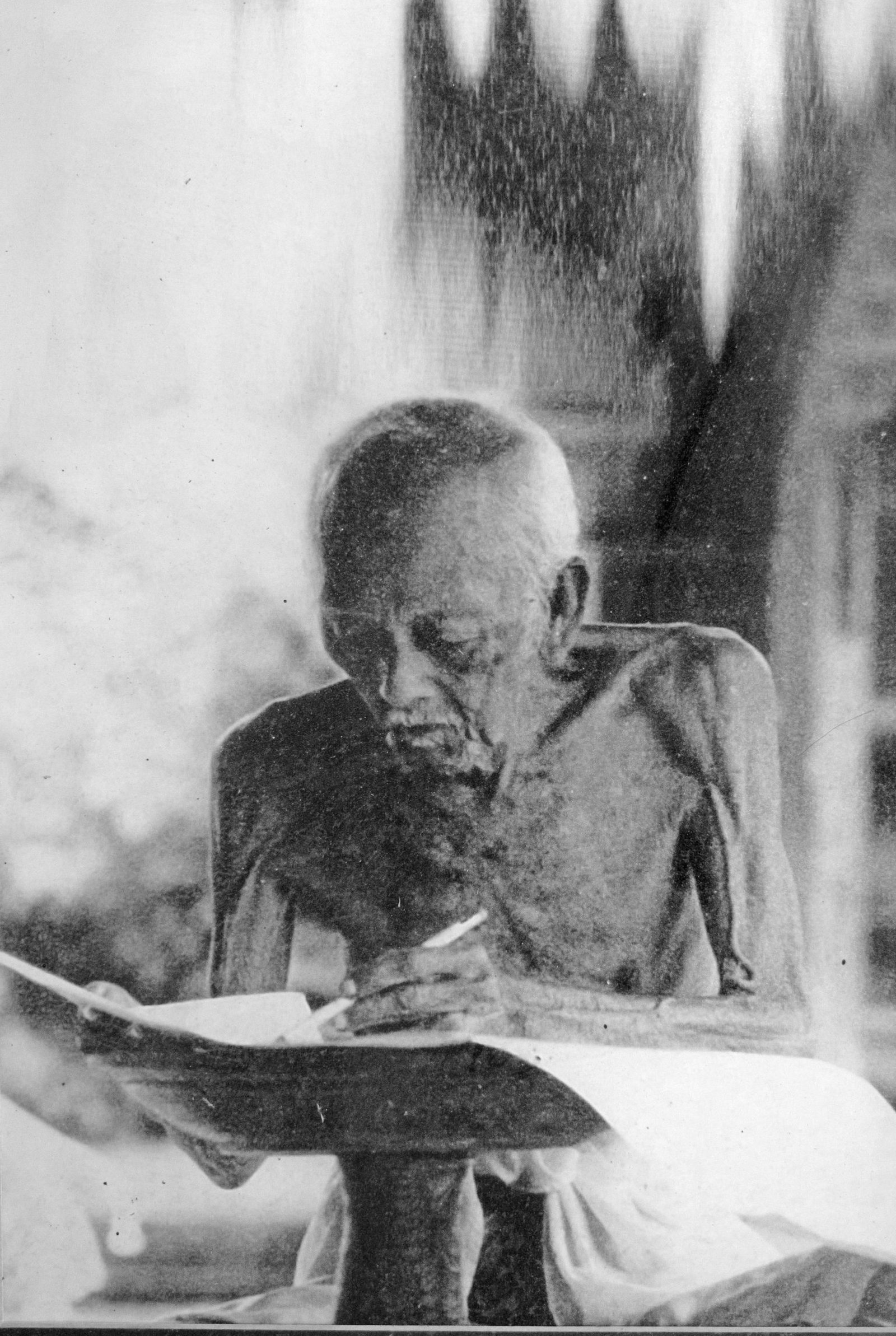About Us

Ubud Water Palace
Ubud Water Palace, also known as Pura Taman Kemuda Saraswati, stands as a magnificent testament to the rich cultural heritage of Bali. Nestled within the enchanting region of Ubud, this landmark holds profound significance in Balinese culture. It is a sacred space dedicated to Dewi Sarasvati, the Hindu goddess of learning, literature, and art, embodying the essence of creativity and knowledge (Kartajaya, Hermawan, 2009).
The palace is renowned for its exquisite water gardens, adorned with delicate lotus flowers floating gracefully on serene ponds. The harmonious blend of architectural craftsmanship and natural splendor creates an atmosphere of tranquility and reverence.
In the Balinese language, Pura Taman Kemuda Saraswati translates to “the temple with sacred water sources,” emphasizing the spiritual and symbolic importance attributed to water in Balinese culture. Water is believed to possess purifying and healing qualities, connecting the physical and spiritual realms. The presence of sacred water sources within the palace signifies its role as a center for purification, renewal, and spiritual nourishment.
Ubud Water Palace
Located in the heart of Ubud, the Ubud Water Palace encompasses the revered Taman Kemuda Saraswati Temple, a landmark with roots reaching back to ancient times. The Balinese name, Pura Taman Kemuda Saraswati, translates to a source of holy water, underscoring its significance for the local community. This sacred site attests to the vital role water plays in Balinese life, as the spring water flows gracefully, filling the tranquil lotus pond. Reflecting its enduring importance, the Ubud Water Palace has been a meaningful symbol for the people of Ubud throughout history. Furthermore, it holds a historical connection as a place of solace and reflection, having been utilized for such purposes by its founder, Ida Tjokorda Gde Ngoerah.

Lotus Flowers, lotus ponds, and the relationship with the goddess Saraswati
In accordance with the name of the holy place in the Ubud Water Palace area, namely Pura Taman Kemuda Saraswati, the establishment of this temple is a dedication to the Goddess Saraswati. Dewi Saraswati is a goddess who is believed to be the goddess of knowledge, learning, literature, and art in the teachings of Hinduism.
- Vienna (harp), which is a musical instrument that symbolizes the perfection of art and science.
- The lotus flower which symbolizes knowledge is sacred.
- Kendi is a symbol of eternity.
- Lontar (book), is the holy book of the ‘Vedas’, which symbolizes universal, eternal, and true knowledge.
Tjokorde Gde Ngoerah is behind the establishment of Ubud Water Palace and Pura Taman Kemuda Saraswati which we often see today

The Founder
Tjokorda Gde Ngoerah is the founding figure or founder of Ubud Water Palace and Pura Taman Kemuda Saraswati. He was born at Puri Saren Kauh Ubud in 1856 and passed away in 1967. He passed away at the age of 111 years. During his lifetime, he has gone through three different periods, starting from the Kingdom period, the Colonialism period, and the Independence period.
Ida Tjokorda Gde Ngoerah once took part in the guerrilla fight against the Dutch colonialists in 1946. For his actions, he was detained in the Gianyar prison. He also received harsh treatment from the officers in the prison, so he experienced several health problems. In one of his literary works entitled “Rajendra Prasad,” he felt his hearing condition was impaired, and his hands were always shaking.
He is the figure behind the establishment of Ubud Water Palace and Pura Taman Kemuda Saraswati which we often see today. He has set out all the details regarding Ubud Water Palace and Pura Taman Kemuda Saraswati in his literary work entitled “Kakawin Rajendra Prasad”. In addition, there are several other literary works that he created. Among them are Kakawin Gajah Mada, Geguritan Rajendra Prasad, and Geguritan Sudhamala.

The Architect
I Gusti Nyoman Lempad, a revered Balinese artist and architect, left a lasting impact through his creation of the Pura Saraswati. Lempad’s architectural brilliance is evident in the temple’s intricate stone carvings and grand entrance, depicting scenes from Hindu mythology. Inside, visitors are greeted by hand-carved wooden panels, delicate stone reliefs, and exquisite statues that create a serene and inspiring atmosphere. The Pura Saraswati stands as a cultural landmark, reflecting Lempad’s deep reverence for Balinese spirituality and artistry, while serving as a source of inspiration for worshipers and visitors alike.
The breadth and depth of I Gusti Nyoman Lempad's art portfolio demonstrate his profound artistic talent and contribution to Balinese art
Lempad’s artistic genius and attention to detail are showcased in the design of the Pura Saraswati. The temple’s harmonious blend of traditional Balinese architecture and Lempad’s artistic vision make it a captivating structure. The temple’s wooden panels and stone reliefs, intricately crafted with mythological stories and epic narratives, transport visitors into the realm of knowledge and creativity. The statues of Saraswati and other deities further enhance the spiritual ambiance.
The breadth and depth of I Gusti Nyoman Lempad’s art portfolio demonstrate his profound artistic talent and contribution to Balinese art. His drawings, paintings, and sculptures continue to be celebrated for their technical excellence, cultural significance, and timeless beauty.

Kekawin Rajendra Prasad
In the Geguritan Rajendra Prasad, Tjokorde Gde Ngoerah beautifully narrates the momentous occasion when President Rajendra Prasad of India, accompanied by President Soekarno, visited the Pura Maha Saraswati. This visit, as depicted in Rajendra Prasad’s geguritan script, later came to be known among the people of Ubud as Pura Taman Kemuda Saraswati. The convergence of events was truly extraordinary, as Brother Guna presented the explanation of Geguritan Rajendra Prasad on the auspicious day of Tumpek Landep, which also coincided with the Piodalan celebration at the enchanting Pura Taman Kemuda Saraswati in Ubud. The atmosphere was filled with a sense of profound significance and joy.
Geguritan Rajendra Prasad provides an elaborate depiction of each sacred Palinggih (shrine) within the revered Main Mandala of Pura Maha Saraswati. Majestically positioned to the east is the towering Padma Agung Merong Tiga, where reverence is offered to the magnificence of “Sang Hyang Tiga Pasupati.” The Palinggih “Padma Agung” is gracefully accompanied by the esteemed presence of “Meru Tumpang Tiga” Pengawangan, embodying the divine energies of “Ida Hyang Bhatara Goa Lawah” and “Ida Hyang Bhatara Uluwatu.” Adjacent to the Kaja Kangin direction stands the sacred Bale Pesamuhan Ida Bhatara, serving as a focal point during Pujawali or Piodalan ceremonies. On the northern side, two shrines gracefully flank the revered Ratu Sedahan Nglurah, the guardian of the temple precinct. Intriguingly, within the main mandala, an awe-inspiring statue with an intimidating countenance and a roof intricately crafted from Kemoning Wood stands tall, representing the divine presence of “Jero Gde Nusa-Bhuta Raja Nusa Pati.”

